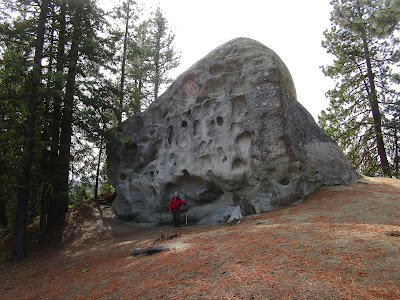Happy Halloween
These three cards shared this week and are numbered H14, H15, and A16. They all have examples of symbols used at Halloween. They are unused Halloween postcards printed by Laughing Elephant.com and are reproductions of a vintage illustrations from around 1910. The card above has the code: H 16 with an N inside a triangle and a copyright symbol at the lower left side. The illustrator is not identified but the style dates all three the cards to the early 1900s when greeting cards for all or most holidays were popular.
This second card has the code: H 15
And the third card has the code: H 14
Halloween is also known as All Hallows’ Eve and All Saints Eve. It is celebrated across the globe and observed in many countries, including the United States, on 31 October. Many Halloween traditions appear to have been influenced by Celtic harvest festivals such as the Gaelic Samhain. While some believe it stems from pagan roots many others think it might stem from an early Christian holiday called All Hallows’ Day when a vigil was kept in remembrance of the deceased. Modern day Halloween activities include things like trick-or-treating, parties with apple bobbing, carving pumpkins to make Jack-o-Lanterns, divination and other games, dressing up in costumes, playing pranks, visiting “haunted houses,” or watching scary movies.
Jack-o-Lanterns were used as a symbol on All Hallows’ Eve long ago in Ireland. Since there were no pumpkins in Ireland at the time this tradition began, turnips were used instead. An old Irish folk tale has a man named Stingy Jack who made both God and the Devil angry, and was therefore not welcome in either heaven or hell because of it. He was forced to roam the earth with only the turnip jack-o-lantern to light his way. People would put Jack-o-Lanterns around their homes to keep Stingy Jack from coming to their house on the night that the vigil was kept for the dead.
"Wise women" who in earlier times were known to be helpful with healing illnesses, were feared under Christianity, becoming known as "witches," and considered as symbols of evil and sorcery. Bats were associated with the myth of vampires. They were considered spooky because they might transform into a vampire and suck the blood of animals and humans.
Druids believed that evil humans could turn themselves into cats. Black cats were especially vulnerable since the color black was a symbol of evil and death. Owls were also thought to be associated with witches and therefore evil. The sharp call of a Screech Owl made people think of witches flying overhead.
Ordinary playing cards are symbolic of various things too. Red for warmth and light, black for cold and the powers of darkness. The four suits: the spade is in the shape of a leaf; the heart becomes the center of life; the diamond, represents the feminine, and the club the masculine.
Cards are also representations of luck, good or bad as in “the hand that fate dealt.” The 52 cards in a deck equal the 52 weeks in a year; the 13 cards in each suit equal the lunar months in a year. All kinds of playing cards, and special divining cards, like Tarot cards, were also used for telling fortunes.
Brooms were thought to be able to sweep away the evil. It is not clear why witches use brooms to fly around; however, it may stem from pagan times when rural farmers would dance around astride pitchforks and brooms during a full moon to encourage the growth of their crops.
For additional information, see:
https://en.wikipedia.org.wiki/Halloween
https://www.history.com/news/why-witches-fly-on-brooms
https://kinghalloween.com/halloween-symbols/
https://safepaw.com/from-bats-to-black-cats-the-real-stories-behind-halloweens-furry-icons/
https://public.websites.umich.edu/~umfandsf/symbolismproject/symbolism.html/C/cards.html





















